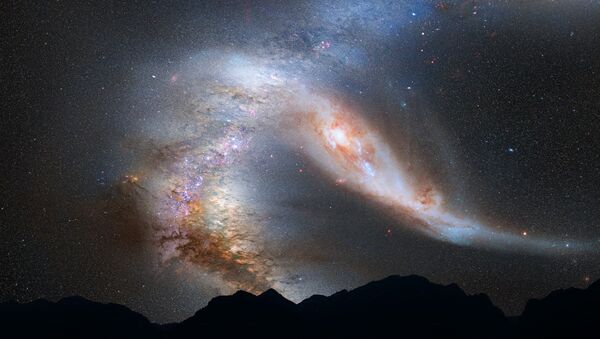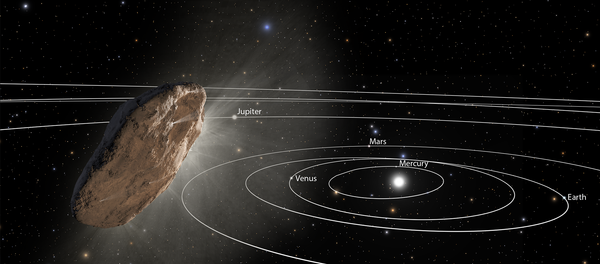The research features a computer simulation of negative mass properties, which predicts the formation of dark matter halos. A dark matter halo is a theoretical component of a galaxy that envelops it and extends well beyond its edge. According to Sky News, the simulation matches the behaviour of halos previously suggested by observations via radio telescopes.
Radio Sputnik has talked about the new study with Dr James Farnes, Leading Research Associate at Oxford's e-Research Centre.
Sputnik: Tell us about this revolutionary research and what is it that we didn't know before about dark matter?
In fact, there are lots of negative mass particles that are continuously popping into existence more and more of them all the time. And this can accelerate the expansion of the universe and also cluster around galaxies. And so this would be completely compatible with the observations we see for dark matter and dark energy when we use telescopes to look up at the sky.
Sputnik: What made you think that this might be the nature of dark matter and dark energy?
Dr James Farnes: So I guess, I had a usual background actually coming into science. So I initially started as an electronic engineer where I guess everything is focused on positive and negative poles when you work with electricity. And then I went and did a Ph.D. in astrophysics and worked on magnetic fields and so then when you work with magnetism, the universe is full of North and South poles.
READ MORE: Scientists Learn How to Predict Space Radiation Levels
So then I started thinking about cosmological problems in gravity and it seemed to me I guess I come with a certain bias and I thought well this must have two poles to this. That's what I am suggesting, that you might have positive and negative masses. Anyway, I emphasise that this is early days and we need to do a lot more studies now to test if this can really be true or if it is just, you know, an interesting mathematical idea.
Sputnik: What were the previous models to explain the nature of dark matter and dark energy?
And so in this new theory, we are actually able to view both exotic matter in the form of those negative masses and the modified gravity in the form of these particles being created all the time. And that combination actually seems compatible entirely with dark energy and dark matter.
Sputnik: Can you tell us about how this all fits in with the, you know, I think that the best theory we have right now is the Big Bang theory of cosmology, right? And that would coincide with the Lambda-CDM model.
Dr James Farnes: Well, absolutely.
Sputnik: Tell us about how this new finding coincides with all that and fits in with that?
READ MORE: Astronomers Discover Ghost Galaxy Lurking on Edge of Milky Way
Sputnik: So now in that standard model the Lambda as it notes this dark energy is kind of a cosmological constant and the CDM stands for cold dark matter. Why is it cold, tell us?
Dr James Farnes: Yes, there are various models of dark matter. I mean some people have suggested models where there is a warm dark matter and also cold dark matter. But it turns there are various warm variants and so the cold dark matter just seems to be the best possible variant to be consistent with the data.
Sputnik: And does it move relatively slowly? Can you tell us about like the nature of it? I know that this is sort of a space-filler between all these other molecules that we know about and in space as well.
The views expressed in this article are solely those of Dr James Farnes and do not necessarily reflect the official position of Sputnik.






